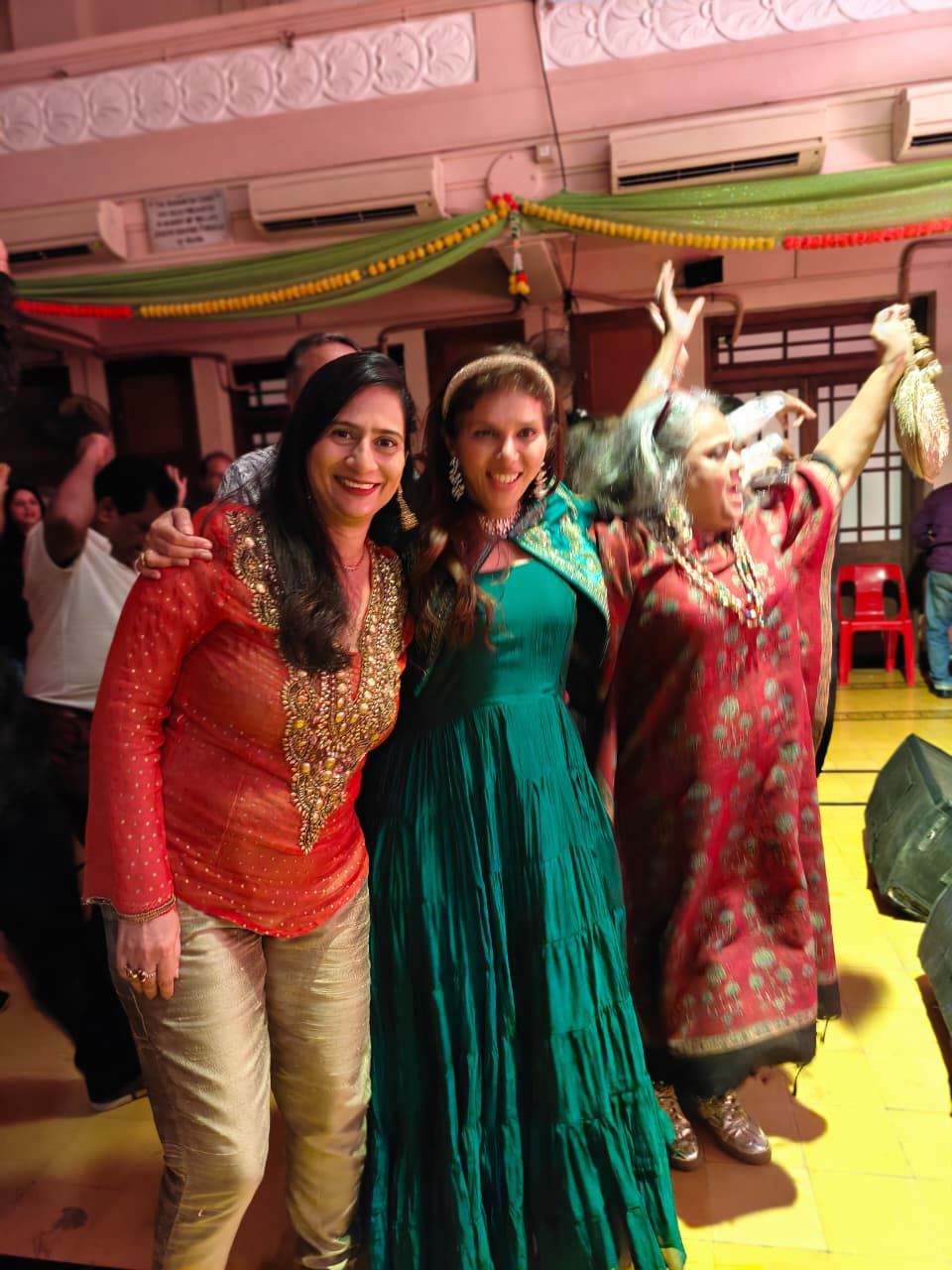Here’s One for the Archives: A Real-Life B-Town Drama — Welcome to the Real Bandra!
- Kenneth Hopkins
- Oct 28
- 4 min read
Bandra isn’t just Mumbai’s most photographed suburb. It’s a living theatre — a stage where generations of legacy, loyalty, and leadership perform under the same flickering spotlight. Behind the palm-lined promenades and the glamour of Hill Road lies a world that is as dramatic as any Bollywood script, except the stakes here are real: faith, culture, and community.
And right now, that world has found its stage at the Bandra Gymkhana — the East Indian Catholic community’s crown jewel, its social parliament, and its Mecca of memory. What unfolds within its walls feels less like local politics and more like a live episode of The Crown set in Bandra.

The Eye of the Storm

At the centre of this swirling narrative stand two remarkable women — each powerful in her own way, each deeply committed to the idea of service. They are not rivals in the conventional sense. They are mirrors — reflecting two modes of leadership that have defined the East Indian Catholic identity in modern Mumbai.

The first, Dr. Cheryl Misquitta, commands both admiration and scrutiny. A true matriarch of the Bandra Gymkhana, her presidency has been marked by formidable discipline, financial prudence, and an unwavering sense of responsibility. Under her stewardship, the Gymkhana’s corpus fund reportedly crossed ₹100 crore, a testament to strategic governance and unrelenting commitment to the institution’s longevity.
Dr. Cheryl Misquitta's managerial style might divide opinion, but leadership rarely thrives on universal approval. In the spirit of Queen Esther herself, she stands firm when others waver, knowing that faith-driven conviction often demands confrontation. For her, the Gymkhana is not just a recreational space — it is a covenant. A responsibility towards the generations of East Indians who built Mumbai brick by brick, parish by parish, grotto by grotto.
The Counterpoint of Grace
On the other side of this moral and emotional equation is Teresa Aguiar, a woman whose quiet resilience and lifelong service have earned her deep affection within the community. A teacher by calling, Teresa embodies the Gospel through education — believing, as she has shown through decades of service, that knowledge is the great equalizer.
She represents the OBC East Indian legacy — the families who, through perseverance and faith, built upward mobility through teaching, caregiving, and stewardship of tradition. Her empathy and wisdom come not from positional authority but from lived experience. To her, the true mission of community leadership is inclusion: every voice heard, every wound healed.

Between Conflict and Communion
The two women once stood on the same side — allies united by the goal of preserving the East Indian cultural fabric within an evolving Bandra. Today, their differences have become symbolic of a larger question facing the community itself: Can heritage evolve without conflict?
For an outsider, this might look like a small-town spat. But for those who understand Bandra Gymkhana’s history, it’s clear this is about more than ego. It’s about theology meeting management, faith meeting finance, and devotion meeting duty.

The East Indian Catholic ethos has always rested on reconciliation — on the belief that unity is a sacrament. The Gospel’s call to forgiveness isn’t metaphorical here. It’s practical. And in this moment of communal polarisation, the question lingers: Will these two women — both remarkable in their own right — fulfil their sacramental duty to forgive, to reconcile, to lead together again?
Bandra’s Living Gospel
The Bandra Gymkhana has always been more than brick and mortar. It is a social relic — a reminder that the East Indians are not just Mumbai’s first citizens but its original city-builders. From the bylanes of Ranwar to the corridors of Hill Road chapels, this community has carried forward a rare synthesis of faith and cultural pride.
Dr. Cheryl Misquitta and Ms. Aguiar are not merely individuals; they are symbols of continuity in a time when heritage feels negotiable. Their choices in this chapter will define not just the future of an institution, but the spirit of Bandra itself — that eternal blend of heart, hustle, and holiness.

As Christ said in the Beatitudes: “Blessed are the peacemakers, for they shall be called the children of God.” The entire community now watches to see who will step forward as that peacemaker — who will remind Bandra that the true crown is not won through control, but through communion.
For the Record
This story, like Bandra itself, belongs to history as much as it does to today’s headlines. The politics of gymkhanas, parish committees, and cultural societies may seem local, but they are microcosms of something larger — a nation negotiating its identity between modern ambition and ancestral faith.
And as someone born of this soil — an Anglo-Indian grandson of East Indian heritage — I cannot help but feel that The Pali Hillbilly, my forthcoming series, must begin here: in this collision of faith and folklore, ego and empathy, power and purpose.
Because sometimes, the most cinematic stories aren’t written in studios.They are whispered in parish halls, debated in gymkhanas, and resolved — one prayer at a time — in the heart of Bandra.
Welcome to the real Bandra.






Comments